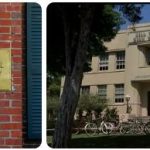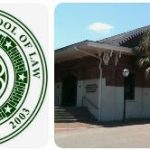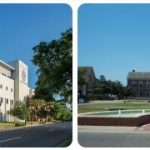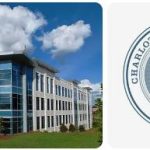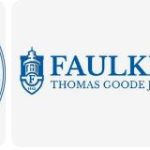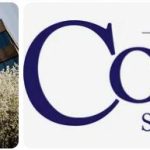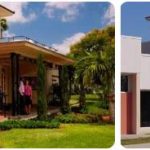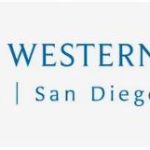Appalachian School of Law (ASL) was founded in 1994 to provide a quality, affordable legal education to the people of Southwest Virginia and beyond. The school was created by a group of local business leaders and lawyers, including William “Mac” McCool, who served as the first dean. The school opened with just 63 students in 1997, but quickly expanded its enrollment to over 200 students by 2000. In 2002, ASL became an independent law school and began offering evening classes to accommodate working professionals.
In 2004, the school moved into a new building located on Main Street in Grundy, Virginia. This state-of-the-art facility houses classrooms and offices for faculty and staff as well as a library containing more than 150,000 volumes. ASL has also developed strong ties with local businesses and organizations in order to provide internships and job opportunities for its graduates. Today, Appalachian School of Law is accredited by the American Bar Association (ABA) and is ranked among the top regional law schools in the nation. It continues to offer an affordable legal education with a focus on public service and community outreach.
Appalachian School of Law is located in the state of Virginia. As one of the leading law programs, Appalachian School of Law has a high average LSAT score of 147-152 when recruiting new students. As a return, the median starting salary for law graduates reaches $70,689 per year. See the following table for detailed admissions information and career profiles of Appalachian School of Law.
The Appalachian School of Law is a private law school in Grundy, Virginia, a small town near the convergence of Virginia, Kentucky, and West Virginia. The school offers a three-year Juris Doctor degree, and enrolls approximately 370 full-time students from numerous states and several foreign countries. The school also has 482 alumni and 50 staff.
The school was founded in 1994 with a deep commitment to community service and leadership, and it admitted its first class of students in August 1997. Appalachian distinguishes itself from almost all of the other 192 American Bar Association-accredited law schools in the country, as its students are required to volunteer 25 hours each semester on community service projects, ranging from dispute resolution training to humane society management. Only 11 other law schools have similar mandatory programs.
ASL also conducts Alternative Dispute Resolution (ADR) training in local schools. This program has drawn national attention, particularly from former U.S. Attorney General Janet Reno, who has publicly congratulated the school on this effort.
The school was provisionally accredited by the American Bar Association in February 2001. The school was recommended for full accreditation by the ABA’s legal education committee in April 2006. The law school was granted full accreditation from the ABA on June 12, 2006, with an effective date of June 11, 2006.
ASL has two buildings, which are the main academic building and the law library. A third building, Booth Hall, is under construction. Booth Hall will be situated directly behind the main academic building and will open in 2008.
Admissions: Appalachian School of Law
Appalachian School of Law (ASL) is a small law school located in Grundy, Virginia. The school has a total enrollment of about 500 students. Approximately 75% of the student body is made up of minorities, making it one of the most diverse law schools in the nation. The acceptance rate for ASL is around 40%, and the average GPA for incoming students is 3.3. The median LSAT score for accepted students is 145, which indicates that ASL is moderately selective when it comes to admissions criteria. In terms of gender, the student body is split almost evenly between male and female students. Additionally, ASL has a strong international presence with over 20% of its students coming from abroad.
In terms of financial aid, ASL offers several options to help make law school more affordable for its students. First-year applicants are eligible for merit-based scholarships that range from $5,000 to full tuition waivers based on academic performance and LSAT scores. Additionally, there are numerous loan programs available to both first-year and continuing students that can provide low-interest financing options for tuition and living expenses. Finally, ASL also offers an Assurance Grant Program which provides need-based grants to incoming first-year students who demonstrate financial hardship or are members of underrepresented minority groups in legal education.
| Fall 2019 Admissions and Enrollment Statistics | |
|---|---|
| Total number of full- and part-time applicants | 1,617 |
| Total number of full- and part-time acceptances | 784 |
| Overall acceptance rate | 48.5% |
| Total number of full- and part-time first-year students enrolled | 129 |
| Number of full-time program applicants | 1,617 |
| Number of full-time program acceptances | 784 |
| Full-time acceptance rate | 48.5% |
| Number of first-year full-time students enrolled | 129 |
| Number of part-time program applicants | N/A |
| Number of part-time program acceptances | N/A |
| Part-time acceptance rate | N/A |
| Number of first-year part-time students enrolled | N/A |
| Fall 2019 GPA and LSAT Scores | |
| 25th-75th percentile GPA scores for all students | 2.61-3.31 |
| 25th-75th percentile LSAT scores for all students | 147-152 |
| 25th-75th percentile undergraduate GPA for full-time students | 2.61-3.31 |
| 25th-75th percentile LSAT scores for full-time students | 147-152 |
| 25th-75th percentile undergraduate GPA for part-time students | N/A |
| 25th-75th percentile LSAT scores for part-time students | N/A |
Careers: Appalachian School of Law
| Bar Statistics (Winter and Summer 2018 administrations) | |
|---|---|
| State where the greatest number of first-time test takers took the bar | VA |
| School’s bar passage rate for first-time test takers | 83.3% |
| Statewide bar passage rate for first-time test takers | 81.6% |
| Class of 2018 Graduates | |
| Total graduates | 95 |
| Graduates employed at graduation | N/A |
| Graduates known to be employed nine months after graduation | 66.2% |
| Starting Salaries of 2018 Graduates Employed Full-time | |
| 25th percentile private sector starting salary | N/A |
| Median private sector starting salary | $70,689 |
| 75th percentile private sector starting salary | N/A |
| Percent in the private sector who reported salary information | 56% |
| Median public service starting salary | $46,057 |
| Areas of Legal Practice (Class of 2018) | |
| Percent employed in academia | 0.0% |
| Percent employed in business and industry | 11.0% |
| Percent employed in government | 11.0% |
| Percent employed in all judicial clerkships | 6.0% |
| Percent employed in law firms | 62.0% |
| Percent employed in public interest | 6.0% |
| Percent employed in an unknown field | 4.0% |
| Percent employed in a judicial clerkship by an Article III federal judge | 6.0% |
| 2018 Graduates Employment Location | |
| Graduates employed in-state | 21% |
| Graduates employed in foreign countries | 0% |
| Number of states where graduates are employed | 17 |
| New England (CT, ME, MA, NH, RI, VT) | N/A |
| Middle Atlantic (NY, NJ, PA) | N/A |
| East North Central (IL, IN, MI, OH, WI) | N/A |
| West North Central (IA, KS, MN, MO, NE, ND, SD) | N/A |
| South Atlantic (DE, DC, FL, GA, MD, NC, SC, VA, WV) | N/A |
| East South Central (AL, KY, MS, TN) | N/A |
| West South Central (AR, LA, OK, TX) | N/A |
| Pacific (AK, CA, HI, OR, WA) | N/A |
| Mountain (AZ, CO, ID, MT, NV, NM, UT, WY) | N/A |
| Employment location unknown | 5.0% |
| Career Services | |
| (Data appear as originally submitted by this school) | |
| Career services operations | Full service office with on-line access to job bulletins; two full-time employees; on-site interview rooms |
| Job Type | |
| Bar admission required or anticipated (e.g., attorney and corporate counsel positions, law clerks, judicial clerks) | 77.0% |
| J.D. preferred, law degree enhances position (e.g., corporate contracts administrator, alternative dispute resolution specialist, government regulatory analyst, FBI special agent) | 4.0% |
| Professional/other (jobs that require professional skills or training but for which a J.D. is neither preferred nor particularly applicable; e.g., accountant, teacher, business manager, nurse) | 4.0% |
| Nonprofessional/other (job that does not require any professional skills or training or is taken on a temporary basis and not viewed as part of a career path) | 2.0% |

